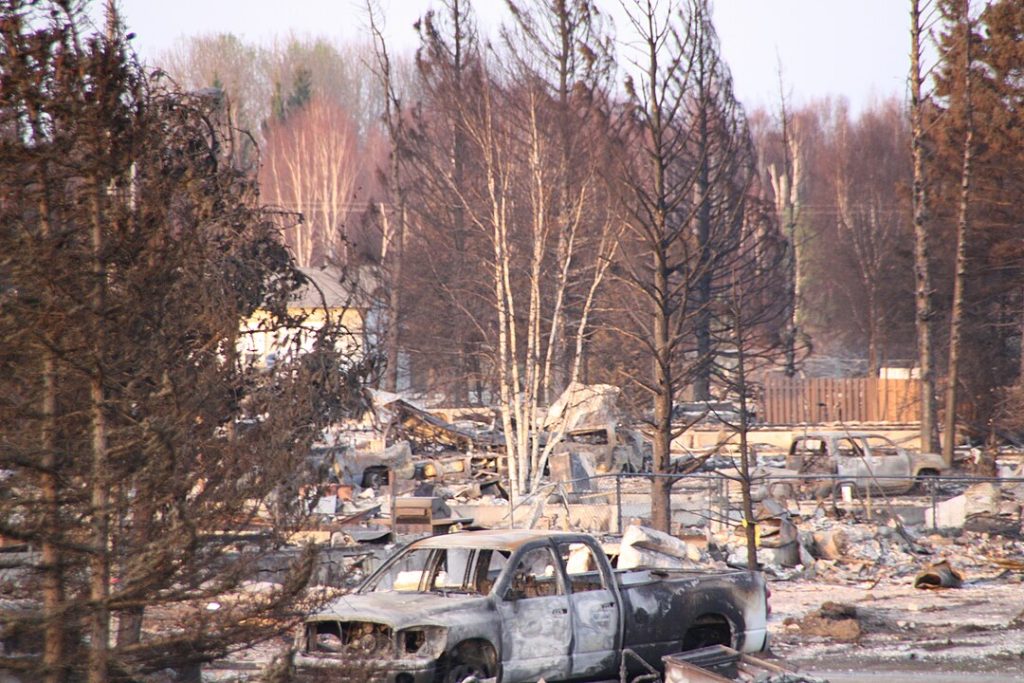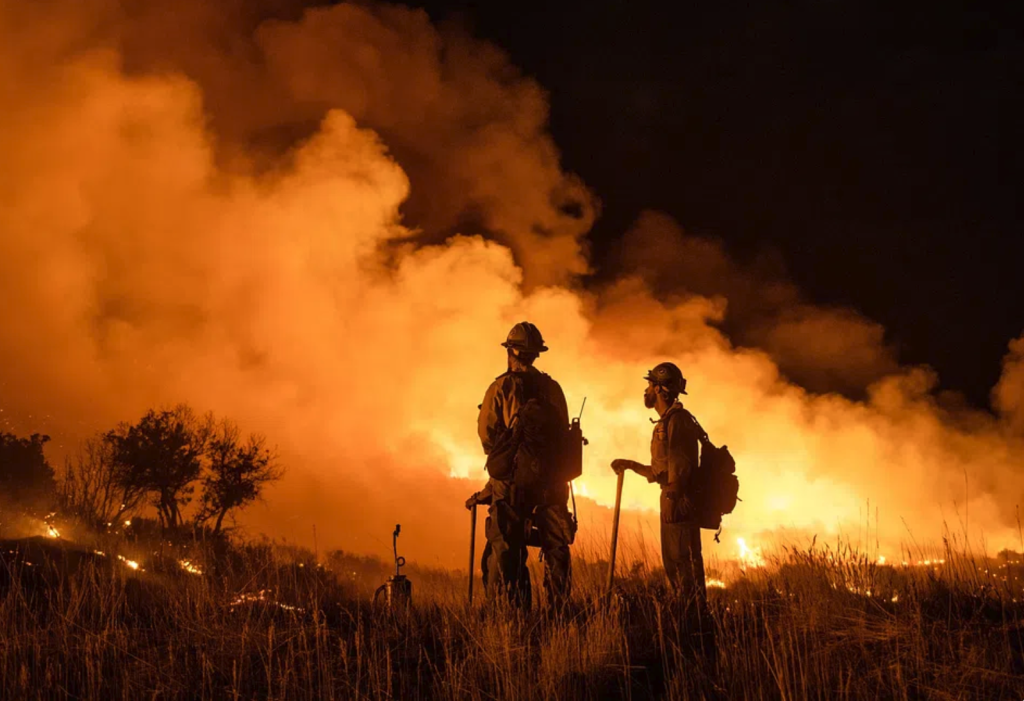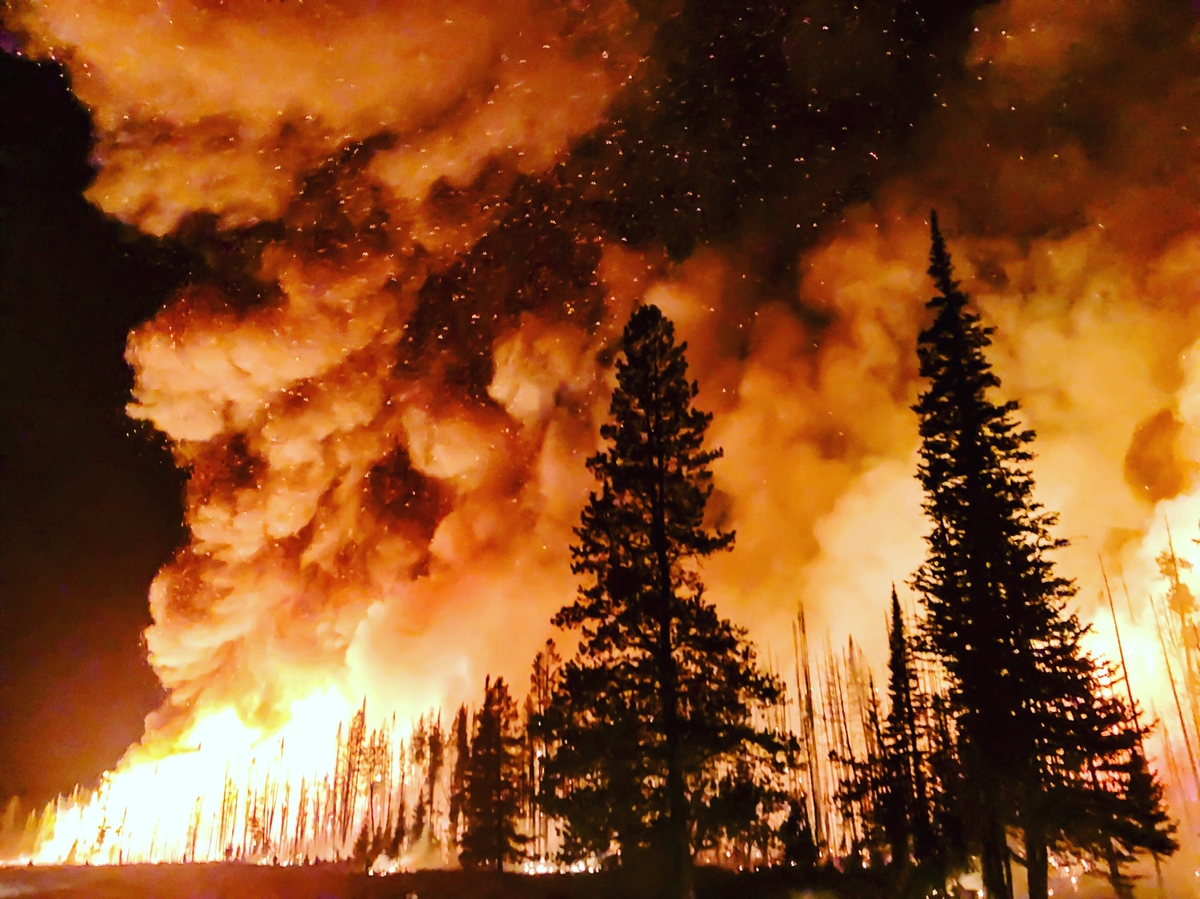While the Northern Hemisphere has grappled with catastrophic fires and floods, Australia faced its hottest winter on record, primarily attributed to soaring ocean temperatures. As concern mounts in Australia, there looms the impending threat of an El Niño event, promising hot and dry conditions that could significantly exacerbate the fire risk in the upcoming summer season. Already, we have caught a glimpse of the challenges we may encounter with an early onset of the fire season in New South Wales, Queensland, and the Northern Territory, threatening to destroy properties.
As we embark on an exploration of the unique fire risk confronting Australia this summer, stemming from a complex interplay of factors, our initial focus will be on the impending challenges. These challenges encompass a range of issues, from smoke-related concerns and transportation disruptions to potential food supply shortages, power interruptions, and communication breakdowns.
In the upcoming sections of this blog post, we will explore the pivotal role of Artificial Intelligence (AI) in wildfire detection and management and elaborate on how it can empower firefighters to swiftly respond in the early stages of a fire outbreak, thus averting the escalation into a devastating inferno.
Changing Landscape: A Unique Fire Risk
This forthcoming summer’s fire risk differs in several aspects from previous years. The wetter conditions brought about by La Niña have spurred rapid growth in grasslands, rendering them susceptible to quick drying and thus more prone to fires.
Anticipated grass, scrub, and urban fringe fires present a looming threat that could impact both rural and urban areas. These fires have the potential to give rise to a cascade of challenges, including:
Smoke-Related Issues
The combustion of grass, scrub, and urban fringe vegetation can produce thick plumes of smoke. This can severely compromise air quality, leading to respiratory issues and reduced visibility. The pervasive smoke can also have far-reaching health implications for residents in affected areas and the brave firefighters on the frontlines.
Transportation Disruptions
Smoke and reduced visibility pose significant hazards to transportation systems. Roads, highways, and airports can be adversely affected, potentially leading to delays and disruptions in the movement of people and goods. This can have economic repercussions and hinder emergency response efforts.
Potential Food Supply Shortages
Fires in agricultural regions can jeopardise food production and distribution. The destruction of crops and infrastructure may disrupt the supply chain, potentially leading to shortages of essential food items. This not only affects local communities but can also have broader regional consequences.
Line Damage, Outages, and Power Supply Disruptions
The intense heat generated by wildfires can compromise the structural integrity of transmission lines, causing them to sag, warp, or even collapse. Furthermore, falling trees, burning debris, and the gusty winds accompanying wildfires can physically damage the transmission infrastructure, leading to extended power outages. When transmission lines are damaged or destroyed, the supply of electricity to communities can be severely disrupted. This disruption not only affects homes and businesses but also essential services such as hospitals, emergency response systems, and water treatment plants, exacerbating the overall impact on the affected communities.
Communication Breakdown: The intense heat, smoke, and damage to infrastructure often lead to the failure of phone lines, cell towers, and internet connectivity. This breakdown can hinder emergency response efforts, making it challenging for authorities to coordinate evacuations, disseminate crucial information, and provide updates to affected communities.
Early Bushfire Threats across Australia
Queensland’s Ordeal
Dozens of fires have recently ravaged Queensland as the state braces for worsening conditions, damaging property and threatening residential areas. The Queensland Fire and Emergency Services (QFES) have issued high-fire danger warnings for seven districts within the state. Some properties required evacuation, and unfortunately, a few habitable structures were lost to the fires. Additionally, the fires have caused damage to the power infrastructure, with a comprehensive assessment of the extent of this damage currently underway.
New South Wales Battling Blazes
On Tuesday 19 Sept 2023, 74 bush and grass fires were burning across New South Wales (NSW), driven by hot and windy conditions, with 20 uncontained, and over 700 firefighters were working on extinguishing them. High temperatures, exceeding 30 degrees Celsius, and strong north-westerly winds, gusting up to 45 kilometers per hour, pose challenges for firefighting efforts.
NSW RFS Deputy Commissioner Field Operations Peter McKechnie emphasised the need for preparation as bushfire season begins. This comes after the Bureau of Meteorology declared an El Nino climate event for the first time in eight years, bringing hot and dry conditions to Australia during the spring and summer months.
Is Australia on the Brink of Facing another Black Summer?
As we approach the end of an exceptionally warm winter, experts and climate advocates are raising concerns that Australia may not have taken adequate precautions to prevent another devastating event similar to the Black Summer.
Uncharted Territory: Experts Insights On Australia’s Wildfire Challenges
According to Philip Zylstra, a bushfire behaviour scientist and adjunct associate professor at Curtin University, predicting the likelihood of another Black Summer event in Australia poses significant challenges. He emphasised that we are in uncharted territory because of the impact of climate change. Zylstra pointed out that elevated temperatures, similar to those experienced in the Northern Hemisphere this year and in Australia in 2019, could heighten the risk of a severe fire season. He explained that such heat could stress vegetation, rendering it highly flammable, particularly in areas where regrowth from previous fires has become dense and primed to ignite.
David Bowman, a prominent fire management expert from the University of Tasmania, expressed his deep concern about Australia’s level of preparedness for wildfires. He emphasised that Australia is not adequately prepared and is not taking the necessary actions at the required pace, especially considering the rapid rate of climate change.
Addressing the Challenges: Innovations in Fire Response and Early Detection
In August, the NSW Rural Fire Service (RFS) disclosed that only approximately 24 percent of planned hazard reduction burns had been carried out across the state during the 2022/23 period due to adverse weather conditions. The Bureau of Meteorology’s alert for an impending El Niño weather event further exacerbates their concerns by increasing the likelihood of drought, heatwaves, and bushfires.
Major General Peter Dunn, former Commissioner for Emergency Services in the ACT and a member of the Emergency Leaders for Climate Action, expressed deep apprehension about the impending bushfire season. While the severity of the upcoming fire season remains uncertain, Dunn stressed the importance of communities remaining vigilant.
Recommendations and Progress
In October 2020, the Royal Commission into National Natural Disaster Arrangements released its report, including a series of recommendations. A spokesperson from the National Emergency Management Agency, responsible for leading Australia’s disaster and emergency management efforts, stated that 12 of these recommendations have been completed, while work continues on the remaining three Commonwealth recommendations, with state and territory governments handling other suggestions.
The spokesperson acknowledged the emotional toll on communities, particularly those still recovering from the devastation of 2019-2020 and recent flood events, as this fire season approaches. However, given the unprecedented situation we are globally facing, Australia has to reconsider its long-term approaches to bushfire management and prevention. Unprecedented is not a reason to be unprepared. We need to be prepared for the future.

Challenges in Fire Response and Early Detection
Early Detection of Bushfires is Key
The primary goal is to rapidly deploy ground and aerial firefighting resources to combat, contain, and extinguish new fires before they become uncontrollable and overwhelm firefighting efforts. Therefore, enhancing the speed of fire response is critical in containing fires before they escalate. Prompt deployment of firefighting resources significantly reduces the fire’s size upon arrival, minimising financial losses and the impact on the environment. This can be achieved with investments in early wildfire detection systems, which enable quicker fire detection.
The Urgency of Addressing the Global Wildfire Crisis
Proactive Measures are Vital
In a recent article of the International Fire and Safety Journal, Ian Hoey underscores the increasing urgency for addressing the global wildfire crisis, which is escalating due to climate change. He emphasised the pivotal role of proactive measures in effectively countering the intensifying threat to communities, tourists, and local environments. Hoey emphasises the critical need for fire and rescue services to harness state-of-the-art technologies like AI to revamp their approach and strategies for responding to wildfires.
Firefighters and AI: A Dynamic Duo Against Wildfires
Harnessing AI for Firefighting
As wildfires continue to surge globally, traditional methods find it challenging to keep pace with the shifting dynamics brought about by the influence of climate change. There’s an immediate imperative to embrace cutting-edge technologies in fire management. This necessity is fueled by the ever-increasing demand for more effective solutions.
Advanced technologies such as artificial intelligence (AI) hold immense potential to revolutionise the strategies employed by fire services in response to fires. Spearheaded by the World Economic Forum (WEF), the FireAId initiative is dedicated to empowering firefighting efforts with advanced tools, with a primary focus on integrating AI. This integration enables proactive intervention in the early stages of a fire outbreak, thereby preventing its escalation into a devastating “wild” inferno.
Firefighters Adapting to a New Reality
In the challenging battle against wildfires, firefighters find themselves on the frontlines of a relentless and perilous mission. The stakes are undeniably high as they confront the ferocious flames and the changing dynamics of fire seasons. With these shifts, firefighting has evolved into a continuous, year-round endeavour, leaving firefighters with fewer opportunities to rest and recuperate.
In contrast to the historical six-month fire season, the current scenario in Victoria, Australia, paints a stark picture of transformation. Over the past few decades, the fire season has extended by 56 days, significantly altering the firefighting landscape. This prolonged season amplifies the challenges firefighters face, who must adapt to the growing demands of their profession. Dr David Lawrence of the University of Western Australia emphasises that addressing events of the magnitude of the Black Summer necessitates a workforce that is more than four times the size of Australia’s entire paid firefighter contingent.
 Firefighters fighting wildfire: Image by rawpixel[/caption]
Firefighters fighting wildfire: Image by rawpixel[/caption]
AI’s Role in Firefighting
Amidst these evolving conditions, AI technology emerges as a lifeline for firefighters. As fire seasons become increasingly unpredictable, AI-powered tools can provide critical insights into fire behaviour, offering advanced forecasting capabilities that were previously unattainable.
Real-time Data Access
An AI-driven system enables real-time data access and analysis, empowering responders to make informed decisions swiftly and effectively. These technologies can help firefighters anticipate the movement of wildfires, identify potential hotspots, and map out high-risk areas with unprecedented accuracy. The ability to gather and interpret crucial information on fire spread and behaviour becomes instrumental in allocating resources strategically, ensuring timely and targeted intervention.
AI-Powered Wildfire Detection
One of the most crucial aspects of AI in firefighting is AI-powered wildfire detection. The critical factor in determining whether a fire escalates into a massive and destructive blaze lies in the timeframe between ignition, detection, and the initial response. Each passing minute is of utmost importance! While many asset owners have installed cameras to monitor their properties, forests, or valuable assets, effective monitoring of numerous cameras necessitates a dedicated workforce vigilantly observing live image streams to identify fires manually. This approach not only incurs significant costs but also poses the challenge of sustaining focus during monotonous tasks, such as extended hours of scrutinising gradually changing images.
AI-Powered Wildfire Detection Solution
The solution to this problem lies in investing in innovative AI-powered early wildfire detection technologies. AI remains vigilant around the clock, processing and analysing vast volumes of data with speed and precision that far exceed human capacities.
exci: A New Era in Early Wildfire Detection
Proven Technology
During the catastrophic Californian fire season of 2020/21, exci, a pioneer in wildfire detection, demonstrated the potential of state-of-the-art AI technology. The system processed over One Billion images from over 1,000 ground-based cameras and analysed 500,000 satellite images to identify smoke and heat. Covering a staggering 130 million acres across North America, the system achieved remarkable results.
During this period, exci’s AI-assisted Fire Management Tool detected 8,672 fires, with 66% being detected within a minute, 95% within five minutes, and nearly 100% within ten minutes, all with an impressively low false positive rate.
Australian Made and Owned – Ongoing Advancements
Proudly certified as Australian Made and Owned, exci oversees in Australia an extensive network spanning nearly 25 million acres, encompassing regions from Victoria to Northern Queensland. As of October 2023, since the inception of our system, exci successfully detected an astonishing 121,000 fires and counting. This stands as a powerful testament to the critical impact of our technology in safeguarding our clients’ assets, our communities and our ecosystems.
Continuous refinement efforts have led to a remarkable reduction in average detection time, which now hovers around a mere minute. This progress underscores the substantial enhancements in bolstering the system’s efficiency and accuracy in wildfire detection.
Enhancing Resilience through AI
As we confront this evolving wildfire landscape, the collaboration between humans and AI holds the promise of a safer, more prepared Australia. It is our collective responsibility to take proactive measures to address the global wildfire crisis driven by climate change.
by Gabrielle Tylor
exci – The Smoke Alarm for the Bush
21 September 2023
Don’t let hazardous events become catastrophic!
Contact our friendly team today for a comprehensive demonstration of exci’s system and discover how it can protect your assets while also protecting your community.
email: info@exci.ai
International Phone: +61 458 594 554
Visit our website at https://www.exci.ai/ to learn more and take the first step towards a safer and more resilient future

